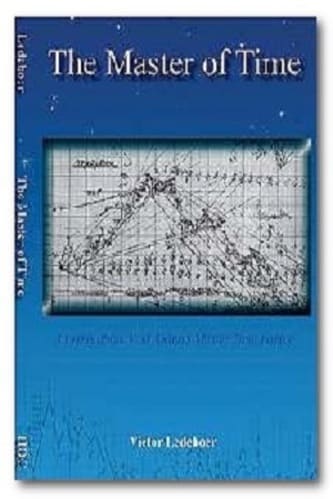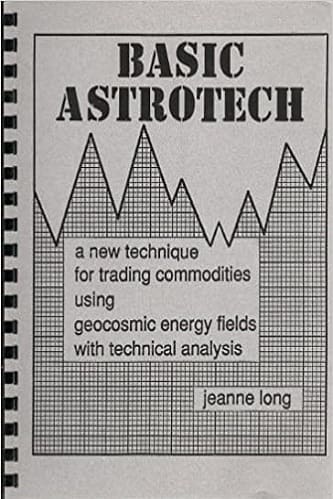Articles
Trading Commodities And Gann By Joel Rensink
Most people get involved in trading commodities because they see the opportunities-prices always moving up and down-and realizing that if they are correct at the right times often enough, large profits will follow. In practice they find it isn’t that easy, and start studying. Most Gann traders/students with whom I have become acquainted expend a great deal of effort to learn the ways of the market so that they can truly become professional traders. After all, trading commodities should be the perfect business, no employees or stock, just you and your money. Total responsibility for profits on you. And the losses. This is a great amount of responsibility.
There is a similarity between a professional trader and professionals in other vocations. Take for instance a medical doctor. It takes a great deal of education to be a good doctor. There are no guarantees for success when his diploma is handed out. If the doctor has chosen to be a heart specialist, there is no guarantee that his first cardiac patient will live or die despite the training that he received. The factors involved in his care for the patient are many: how well he studied under the doctors training him, the patient’s condition relative to an average condition, how alert the doctor is to a change in the patient’s condition, and ultimately, the validity of the treatment given to the patient.
Doctors are taught a methodology to care for the phenomena of health. All of it is based on numbers. Given 1000 flu cases, 366 responded will to this treatment while 687 responded better to this treatment. The more the apparent response the more the treatment is believed to WORK. A perception. Someone’s. If a doctor has enough patients and is successful with a large number of them, he will make big profits. But he has much responsibility–his success or failure is directly placed on his shoulders.
Interestingly, more doctors seem to be more successful in procuring profit than most aspiring traders. I believe the answer is in consistency. If a person decides to become a doctor, he is making a lasting commitment, one which demands effort, time, and BELIEF in what he is learning. This belief is undoubtedly based on results he obtains by following what he is taught. It becomes part of his nature to act on facts or rules, and when he goes into private practice he consistently follows the same pattern.
The aspiring trader doesn’t necessarily have the commitment, or the desire to work on his trading for a very long period of time before he can be reasonable sure of profits. In fact, I have found that most traders aren’t sure that they can even expect profits by following a certain way of trading. The reason must be that they haven’t proven to themselves that any trade-able rule or group of rules followed consistently will end in gain over a long period of time.
In “How to Make Profits in Commodities” W. D. Gann stated, “Any method or system to make money trading in Commodities (or anything) must be based upon the exact law of mathematics.” This seem logical, but is anything consistent enough to base a trading program upon?
It is possible to follow a mathematical system in the markets and gain in the long run. In the late 60’s an interesting book was published by two mathematicians named Edward 0. Thorn and S. T. Kassouf, entitled, “Beat the Market.” It contained their research and actual results of five years of market testing a mathematical system investing in stocks and warrants. When the book was published, the system had already produced an average yearly gain of 25 percent for the five years with no yearly losses. They showed how an average investor could employ the system with a $2,000 brokerage account, and even how one of the authors had more than double $100,000 in the five years of the test. The system proved in real-time to be consistently profitable in bull markets, bear markets, and even dead or sideways markets. The Holy Grail? Not by a long shot, but apparently effective. The writers showed that even if their strategy were employed through the 1929 crash it would have only profited–all the way up to 1966.
Suggested Books and Courses About Gann’s Methods
If the system worked as well as their proof why were they willing to put it in a book for anyone, including competitors, to read? They answered in chapter 11. Not only did they want to invest their own money in their system, but they thought they could easily sign up BIG money for a percentage of profits. It wasn’t easy. BIG money thought it wasn’t possible, or that 25 percent wasn’t enough per year even if it seemed like it shouldn’t lose. So they wrote the book proving their mathematical theory. Thankfully, that wasn’t the end of it.
In as article in the WALL STREET JOURNAL, of April 6, 1988, the book “Beat the Market” came up again. A Mr. Regan, a stockbroker, met Mr. Thorn in 1969 after reading the book. Mr. Regan had contacts on Wall Street, and Mr. Thorn had his proven system. The WSJ reports that the two raised about $1.4 million and began investing, according to the system’s precepts. The firm now has over $250 million in equity. According to the WSJ, the firm has had annual returns averaging 20.5 percent since 1969.
It won’t take anyone very long to figure out how consistent profitability like that multiplies money. Yet the system and the idea has been there for 20 years. And still it works. All this goes to prove that if a person expects to make a profit from any freely traded market, it will have to be with a mathematically precise system or method and then followed CONSISTENTLY. That is why Edward Thorn is so successful. He discovered something that worked and then worked it. He is a professional, because he can follow his rules very well.
Probably not many of you are terribly interested in hedging stocks and warrants like Mr. Thorn. Lets assume then that accurate market trading is your aim. We all know that in Mr. Gann’s books and courses that there are hundreds of rules and instructions. Which ones should you follow? Obviously, the ones which you can prove beyond a shadow of a doubt. Otherwise you will not be able to consistently, methodically carry them out. Gann said, “The difference between success and failure in trading in Commodities is the difference between one man knowing and following fixed rules and the other man guessing. The man who guesses usually loses. First, prove to yourself that the rules that I give you are good. They have worked in the past and they will work in the future. I KNOW they will work.. Don’t take my word for it. Prove to yourself that they are good. You can make profits by strictly adhering to rules. Make up your mind. If you are not going to follow rules, don’t start speculating ar trading in Commodities–or anything else for you will lose in the end” (Excerpts from PROFITS).
I believe that the main reason people have trouble trading on Gann indications is because they haven’t absolutely proven that the rules REALLY work to themselves. I personally trade only on Gann’s rules, no others. But only on the rules that I have tested and have seen work; over hundreds, even thousands of repetitions. I don’t even think of them as Gann’s rules anymore. I think of them as mine, because I proved them.
For example, Gann described a certain mechanical trading strategy in his commodity course called the “Trendline Indicator.” He stated that if you were a conservative investor and only traded with this one rule as your guide, in active markets always in the market, you should have a large percentage of profits each year. He neglected to mention though, that it was possible to have large whipsaw losses if the market hot into a choppy range, and be a net loser.
Poring over hundreds of years of daily charts, I have proven to myself that this rule really does work, in active markets. To use this rule then, the only decision process becomes how much money do I want to trade on the rule and which market is the most active? If I had traded just this rule, for the last 11 months in T-Bonds, starting June, 1987 with believable fills, I feel I could have made approximately $ 8,300 per contract. Always in the market for the 25 trades it specified, long and short. This isn’t too bad considering the violent up and down moves, whipsaw moves and fear and panic in the market place. But I didn’t. Why? I’m human. I don’t LIKE the idea ofjust trading on just one rule, even if I have proven it beyond a shadow of a doubt, to myself. I feel it is possible to have a better edge by a combination of rules. So do many others who trade by Gann theory.
This naturally means work. That’s okay, considering how well our competition considers work today. Cornelius Vanderbilt, 19th century millionaire, being asked as to the best way to make a fortune, is reported to have said in reply, “There is no secret about it, all you have to do is to attend to your business and go ahead.” In other words, just be consistent.
Joel Rensink is a trader and provides personal instruction for advanced Gann students.




